Maximize Pool Comfort with Energy-Efficient Heat Pumps
September 24th, 2024
September 24th, 2024
There’s something unmistakably exhilarating about slipping into a perfectly heated pool—the kind of warmth that envelops you like a cozy blanket on a chilly evening. But achieving that ideal temperature isn't just about comfort; it’s about maximizing your pool experience, extending swimming seasons, and saving energy. Enter the world of pool heat pumps, a marvel of modern engineering designed to bring both efficiency and luxury to your backyard oasis.
Years ago, a friend of mine decided to transform her pool into a year-round sanctuary. She explored countless heating options, and after much deliberation, chose a heat pump. Her decision wasn't made on a whim; she considered everything from initial costs to environmental impact. The result? Pure bliss. Her pool became a gathering spot, no longer dictated by the changing seasons or fluctuating temperatures.
Unlike traditional heaters, which can guzzle energy like a thirsty camel, pool heat pumps operate by harnessing ambient air, making them astoundingly efficient. They transfer heat instead of generating it, ensuring that your energy bills remain pleasantly reasonable. Innovative technology aside, the decision to switch or install a heat pump should also consider climate, pool size, and usage patterns.
Embarking on this journey to understand pool heat pumps means delving into a world where technology meets practicality. It’s about tailoring your choices to your lifestyle, ensuring that every swim is as refreshing or as relaxing as you desire. Welcome to the complete guide where your perfect pool temperature awaits.
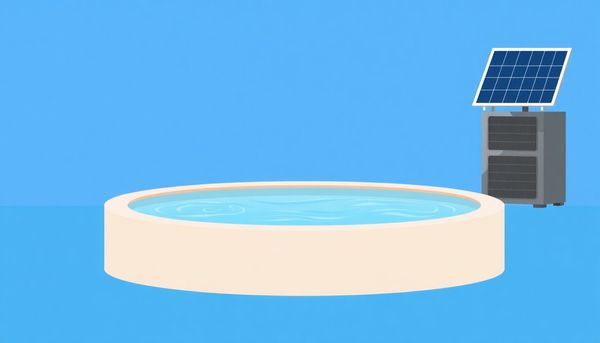
Owning a pool extends beyond just splashing around during the hot summer months. Imagine lounging in warm, inviting water, even when the crisp fall air hints at the approach of winter. That's the magic a pool heat pump introduces to your swimming experience. Unlike traditional gas heaters, which generate heat, heat pumps cleverly transfer it, making use of air warmed by the sun to heat your water efficiently and economically.
My friend Sarah discovered this when she installed a heat pump in her pool. Living in a coastal area, where humidity levels are high, she found her pool stayed perfectly heated well into the autumn months without skyrocketing her electricity bill. The unit's quiet operation—thanks to its acoustic compressor cover—meant she could unwind in peace, free from mechanical hums interrupting her relaxation.
For those in cooler climates, understanding the limitations of heat pumps becomes crucial. Their efficiency dips when temperatures fall below 50°F (10°C), as the surrounding air isn't warm enough for optimal heat transfer. However, in regions with mild winters, a heat pump extends your pool season significantly, ensuring comfort without an environmental or financial burden. Smart, sustainable, and user-friendly, a heat pump transforms pool ownership from a seasonal indulgence to a year-round pleasure, inviting you to swim longer and stress less.
When the warmth of summer days begins to fade, there's a gentle longing for those endless afternoons spent beside the pool. Yet, with a pool heat pump, the luxury of warm swims doesn’t have to be confined to just a few months. This clever device extends your swimming season, allowing you to relish in the comforting embrace of heated water well into the crisp autumn months, and even early spring.
A pool heat pump is not just about prolonging the joy; it's a savvy investment that delivers efficient heating without the dread of skyrocketing energy bills. Unlike traditional gas heaters that burn fuel to generate heat, heat pumps ingeniously capture warmth from the surrounding air and transfer it to your pool. This process utilizes minimal electricity, making it an environmentally friendly choice that aligns with today's energy-conscious world.
Consider the scenario of a family gathering in October, with leaves turning and the temperature dipping. With a heat pump, your pool transforms into a cozy retreat, perfect for a delightful evening swim.
To achieve optimal performance, ensure your pump operates in temperatures above 50°F (10°C). Regular maintenance, such as clearing debris from the evaporator coil and checking water flow, can help avert potential issues, ensuring your pump’s longevity and reliability. Embrace the extended pool season and make every swim a memorable escape.
Tinkering with the pool heat pump might sound like a daunting task, but a few tweaks can greatly enhance its efficiency and lifespan. Let's start with the basics: location. Positioning your heat pump in an area with plenty of airflow and away from obstructions like bushes or fences ensures it can draw in as much air as possible. My friend, Tim, learned this the hard way. After relocating his heat pump from a cramped corner to an open space, he noticed a significant improvement in performance.
Keeping the unit clean is another simple yet effective strategy. Regularly inspect the evaporator coil and fan for debris like leaves or dirt. Tim discovered his pump struggled during the autumn months only to find a blanket of fallen leaves suffocating the coil. A quick cleanup restored its vigor.
Moreover, consider investing in a solar cover. This seemingly simple addition keeps heat from escaping when the pump is off, similar to how a lid keeps the warmth in your coffee mug. It's a small investment with noticeable returns.
Lastly, remember to adjust the thermostat wisely. Set it to maintain a comfortable temperature rather than pushing it to the extremes. This not only prolongs the heat pump's life but also keeps your energy bills in check. Following these steps will have you enjoying warm, inviting pool water while maximizing your heat pump's capabilities.
Heat pumps, though efficient, sometimes decide to test our patience with unexpected quirks. Don't let that chill your spirits; most issues can be resolved without calling in the cavalry. When the pool isn't at its balmy best, the first step is ensuring the heat pump is actually switched on. Sounds basic, but you'd be surprised how often it's overlooked. If power’s not the issue, consider the age-old nemesis: tripped breakers. A quick glance at the breaker box might reveal a simple fix.
Should the water flow feel more sluggish than usual, a clogged filter might be the culprit. Clear any obstructions by rinsing the filter, granting your pump the freedom to perform. Equally important, check that all valves are fully open to ensure optimal water flow. Occasionally, the problem isn't water, but air. If the evaporator coil seems clogged with garden debris, clear it to ensure adequate airflow and efficient heating.
Never underestimate thermostat settings. A thermometer verifies if the water’s temperature matches your expectations. If discrepancies persist, a faulty thermostat might require replacement.
During colder spells, ice formation can halt operations. The heat pump’s refrigerant begins to struggle as temperatures dip below 50°F (10°C). When it gets this chilly, it’s wise to shut the pump off until warmer days return.
Finally, what seems like a leak might just be condensation. A chlorine test strip can differentiate between a leak and mere humidity. If it’s the latter, a quick drain unclogging might restore peace. Should the mystery persist or your resolve falter, a professional's touch ensures both function and warranty remain intact.
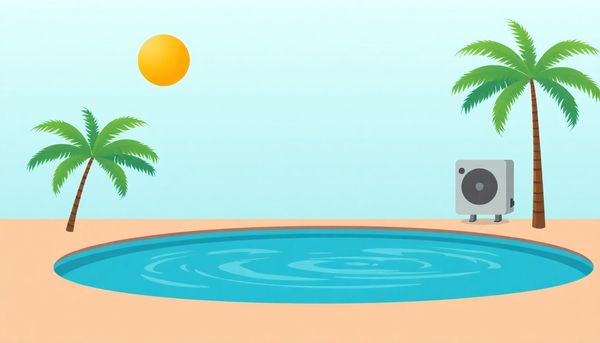
Owning a pool heat pump is a fantastic way to extend your swimming season, yet like any piece of technology, it can hit a few bumps along the way. Consider the scenario where your pool water seems chilly despite the heat pump being on. Before jumping to conclusions, take a moment to inspect the obvious. Is the device actually receiving power? Sometimes, a tripped breaker in the electrical panel can halt operations without warning. For safety, it’s crucial to proceed cautiously with electricity, especially near water. When in doubt, don’t hesitate to bring in an expert.
Next, examine the pool’s water flow. Low flow can be a sneaky issue with heat pumps, often caused by closed valves or a dirty filter. Ensure all valves are open and give your filter a good clean to restore full functionality. Another potential troublemaker is the evaporator coil. Obstructions like leaves or dirt can block air flow, crucial for the heat pump’s efficiency. Clearing away any debris will often solve this problem.
Thermostat settings can also lead to unexpected pool chills. Double-check that your thermostat is set higher than the current water temperature. If the water remains stubbornly cold, a faulty thermostat might be at fault, and replacing it could be the answer. However, when outdoor temperatures drop below 50°F (10°C), it might just be too cold for the heat pump to operate effectively. In such cases, patience is key—wait for warmer weather to resume operation. If all else fails, consulting a professional ensures the heat pump returns to optimal performance without unnecessary stress.
The tranquility of a warm swim can quickly turn to frustration when a pool heat pump decides to act up. But fear not! Identifying power issues is a manageable task that often leads to a simple fix. The first step in troubleshooting is ensuring the heat pump has power. An unresponsive unit might be due to a tripped circuit breaker or faulty wiring. Always approach electrical components with caution and call in an expert if anything seems beyond your comfort level.
Next, consider the water flow. Insufficient flow can hinder the pump’s efficiency, leaving the water cooler than expected. Check that all valves are open and inspect the filter for clogs. A good cleaning might be all it takes to restore optimal performance. Keep an eye on the evaporator coil as well; debris can limit airflow, preventing efficient heating.
Don't overlook the thermostat settings. Double-check that your thermostat is set higher than the current water temperature. A malfunctioning thermostat might need replacement, a small task that can make a big difference in water temperature.
If it’s cold enough for ice to form on the pump, it’s time to pause its operation. This usually occurs when the ambient temperature dips below 50°F (10°C), pushing the refrigerant to freezing levels. For persistent issues or complex fixes, enlisting professional help ensures the job is done safely and correctly. After all, your pool should be a haven of relaxation, not a source of stress.
Ever noticed how a trickle of water can turn into a gushing torrent just by clearing a small blockage? Proper water flow is the lifeblood of your pool heat pump, akin to how our circulatory system keeps us going. A steady flow through your pool’s plumbing ensures that the warmth generated by your heat pump is evenly distributed, allowing you to enjoy those unseasonably warm swims.
Having tinkered with pool systems myself, I’ve learned that even minor obstructions can create significant issues. Start by checking your pool’s filter. A filter filled with debris acts like a dam, restricting water flow and causing your heat pump to work overtime, much like a car engine straining uphill. Regular cleaning or replacement can prevent these bottlenecks, ensuring your pump operates efficiently.
Next, inspect the valves. Sometimes, they might be partially closed or stuck, disrupting the smooth passage of water. Adjust them to their optimal positions, much like tuning an instrument for the perfect pitch. Also, take a moment to check the pump basket for leaves or twigs that might have slipped through – these sneaky culprits can quietly hinder flow, unnoticed.
By maintaining a vigilant eye on the water flow, you not only extend the life of your heat pump but also guarantee that every swim, from spring to the chillier days of fall, is as warm and inviting as possible. Remember, a little attention today saves a world of trouble tomorrow.
In the quiet lull of early autumn, just when the air starts to carry a cooler edge, your pool's warmth becomes a cherished haven. Yet, the transition from summer heat can reveal the temperature-sensitivity challenges of pool heat pumps. As these devices rely on capturing ambient warmth, their efficiency wanes in chilly conditions. Understanding and addressing these quirks ensures your pool remains inviting, regardless of the season.
A common hiccup arises when the outdoor thermometer dips below 50°F (10°C). At these temperatures, the heat pump struggles as the refrigerant inside the unit nears freezing, often leading to ice buildup. My neighbor, for instance, found this out the hard way during an unexpected cold snap, resulting in a frosty heat pump that temporarily stymied their pool plans. Regularly monitoring weather forecasts and turning off the unit during particularly cold spells can preempt these icy surprises.
Humidity, often an unsung hero, plays a pivotal role too. High humidity enhances the heat pump’s efficiency, while dry, crisp air can dampen its performance. In drier climates, adding a solar cover can trap warmth overnight, giving the heat pump a head start each morning. Finally, maintaining unrestricted airflow and cleaning the evaporator coil are simple yet effective tasks. A clear evaporator ensures maximum heat transfer, keeping your pool toasty and your spirits high. Addressing these temperature-sensitivity issues is key to enjoying a warm swim, no matter how the weather behaves.
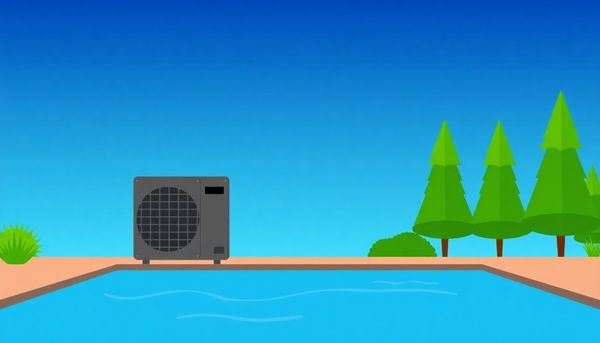
When summer days fade and crisp autumn breezes begin to bite, the desire to immerse in a warm pool remains strong. Enter the energy-efficient pool heat pump—your ticket to extending swim seasons without devouring your utility budget. Unlike traditional gas heaters, which burn fossil fuels, pool heat pumps are masters of transfer, leveraging the ambient warmth in the air to heat your pool water with savvy efficiency.
Imagine harnessing a free resource: the air. A pool heat pump does just that by drawing in warm air, compressing it to increase temperature, and transferring this heat to your pool water. Not merely a technical marvel, this process is environmentally friendly and light on the wallet, as the pump uses electricity primarily to move heat, not generate it.
One might think such technology would require a noisy, clunky machine, but modern heat pumps boast innovations like super quiet compressors and titanium heat exchangers, ensuring a serene backyard oasis. The effectiveness of these units shines brightest in warmer, humid climates, where the air offers abundant heat for extraction. However, don’t be dissuaded if you live in cooler regions—as long as the outdoor temperature hovers around 50°F (10°C) or above, your heat pump will prove its mettle.
In our quest for sustainable living, choosing a pool heat pump is a step towards a greener world. Equip your pool with this energy-efficient powerhouse, and relish the luxury of warm swims as the world around you cools.
Consider the joy of slipping into a warm pool while the leaves change colors or even as snowflakes drift around you. Extending your swimming season beyond the sun-drenched summer months becomes a reality with a pool heat pump. This efficient device borrows warmth from the surrounding air and transfers it to your pool, offering a sustainable solution to keep your swim zone inviting throughout the year.
When I first installed a heat pump in my backyard oasis, the transformation was remarkable. Suddenly, autumn weekends meant serene swims under a canopy of orange and gold, and chilly spring mornings were no longer a deterrent but an invitation. The secret lies in the technology: it doesn’t generate heat by burning fuel but rather redistributes ambient warmth, making it both eco-friendly and cost-effective.
Maintaining peak performance of your heat pump involves a few simple checks. Ensure that airflow is unobstructed and routinely clean the filter. These small actions can prevent common issues like low water flow or reduced heating efficiency. Moreover, knowing the exact temperature settings is crucial; keeping the thermostat appropriately adjusted ensures your pool remains at the perfect temperature.
In essence, the pool heat pump opens doors to endless poolside moments, regardless of the season. By embracing this technology, you are not just prolonging swimming fun but also embracing a greener way to enjoy your pool year-round.
Troubleshooting a pool heat pump can sometimes feel like piecing together a puzzle. My friend Sarah once faced an issue where her pool felt more like a brisk dip than a warm embrace. After a bit of investigation, we discovered that the heat pump wasn’t receiving enough air. It turned out that a rogue pile of leaves was blocking the evaporator coil, stifling the air flow needed to warm the water. Simply clearing away the debris was all it took to get her pool back to its inviting warmth.
Another common hiccup involves the heat pump’s settings. You might think your thermostat is set correctly, but it never hurts to double-check. Once, I found myself scratching my head over a chilly pool, only to realize the thermostat was set lower than the water’s actual temperature. A quick adjustment, and everything was back to toasty normal.
On particularly chilly days, a heat pump might struggle to keep up. If you notice frost building up on the unit, it’s likely due to frigid weather. When outdoor temperatures dip below 50°F (10°C), consider giving your heat pump a break until the weather cooperates.
If you find a puddle around your heat pump, don’t panic. It might just be condensation, not a leak. Testing with a chlorine strip—like I once did—can confirm this. If it’s just water vapor, unclogging the drain should set things right. Of course, if a problem persists or seems too daunting, calling in an expert is always a wise move. After all, a perfectly warm pool is worth the effort.
Choosing the right heating solution for your pool can feel like standing at a crossroads. Each path seems promising, but which will deliver the inviting warmth you crave without causing a spike in utility bills? For those who cherish extended swimming seasons, the pool heat pump emerges as a front-runner, offering efficient and reliable warmth. I remember a friend who once likened his heat pump to having a sunbeam on standby. He marveled at how it effortlessly kept his pool toasty while barely nudging his electricity meter.
Unlike gas heaters that consume fuel to generate heat, pool heat pumps work as silent transporters of warmth, capturing heat from the air and transferring it to the water. This mechanism not only makes them eco-friendly but also wallet-friendly in the long run—a delightful duo of benefits. While solar heaters share this energy-efficient reputation, heat pumps have the edge in flexibility, particularly in varied climates.
A few factors might influence your choice. If you live in a region blessed with consistent warmth and humidity, a heat pump is an excellent choice. Its efficiency peaks in balmy conditions, ensuring your pool remains a warm oasis. However, those in cooler or drier areas might need to pair their pump with a backup heater for those extra chilly days. Ultimately, selecting a heating solution tailored to your specific environment and swimming habits can make all the difference in transforming your pool into a haven of warmth.
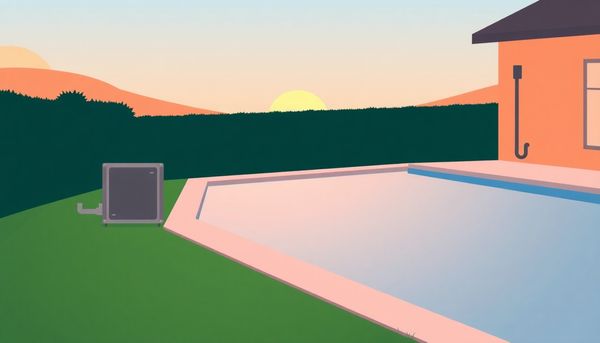
For those who revel in the joys of swimming year-round, enhancing pool comfort across seasons can transform a simple backyard oasis into a perennial paradise. A pool heat pump stands as a silent sentinel, ensuring water temperatures remain inviting, regardless of the chill in the air. Unlike traditional heaters, these ingenious devices capture warmth from the ambient air, using it to heat your pool without causing a spike in utility bills.
Consider the cool mornings of early spring or the crisp evenings of late autumn. Many find the allure of a heated pool irresistible during these times. This is where the efficiency of a heat pump truly shines. With its quiet operation and reliance on natural air temperature, it offers an eco-friendly option that doesn’t compromise on comfort. For those in warmer, humid climates, it works even more efficiently, extracting the heat with ease.
Routine upkeep guarantees that your pump operates at peak performance, offering consistent warmth. Check for common issues such as debris in the evaporator coil or a clogged filter, which can impede function. By attending to these minor maintenance tasks, you ensure your pool remains swimmable in all but the coldest conditions. Whether you're enjoying a solitary early morning dip or hosting a festive poolside gathering, a pool heat pump ensures that comfort is always within reach.
Transforming your pool into a year-round oasis begins with the installation of a pool heat pump. This process isn't just about extending your swimming season; it's about enhancing comfort without inflating bills. When I first decided to install a heat pump, I was daunted by the complexity. However, with a bit of guidance, the process became straightforward and rewarding.
First, selecting the right location is crucial. The pump should be positioned on a level surface with adequate airflow—think of it as giving your pump room to breathe. I placed mine near the pool’s plumbing system to minimize pipework, which not only saved costs but also streamlined efficiency. Be sure to follow local electrical codes when connecting the pump to your power supply; I enlisted a professional for this part to ensure safety.
Plumbing the heat pump into your pool's filtration system comes next. Most units connect after the filter and before the chlorinator. This order ensures that clean, treated water circulates through the pump, maximizing its lifespan and performance. I learned this the hard way after an early misstep clogged my unit with debris.
Finally, setting the thermostat is the cherry on top. Adjust it according to your desired temperature, and let the magic of thermodynamics take over. With careful installation, a pool heat pump can offer you many extra months of warm swimming bliss. The investment in professional help and a bit of research will pay itself back in extended hours of joy and comfort.
Owning a pool heat pump can transform your swimming experience, but like any complex system, it can have its hiccups. Say you notice the pool isn’t as warm as you’d like—don’t despair! Often, the root cause is something straightforward.
First off, ensure the heat pump is powered and the breaker hasn’t tripped. If it has, reset it and keep an eye out for recurring issues, which might indicate a deeper electrical problem. Remember, safety first; if electrical issues seem daunting, call a pro.
When the pump hums but fails to heat, suspect low water flow. Check if the valves are fully open and inspect the filter. A clogged filter restricts flow, so give it a thorough cleaning. My neighbor once puzzled over why her pool was chilly until she discovered a filter choked with leaves—problem solved!
Next, consider air flow. The evaporator coil must be free of debris to function efficiently. Clear away leaves, dirt, and other blockages. You’d be surprised how often a quick cleanup does the trick.
Thermostat settings might also be the sneaky culprit. Verify that the thermostat is set higher than the current water temperature. If the thermostat fails to respond, replacement might be necessary.
Lastly, if the weather dips below 50°F (10°C), the heat pump might freeze up. In such cases, turning it off until temperatures rise is your best bet. Should troubleshooting leave you stumped, don’t hesitate to consult with a professional for peace of mind.
Harnessing the full potential of a pool heat pump isn't just about setup—it's about smart strategies to maximize energy efficiency. First, consider your surroundings. If you're in a sunny region, positioning your heat pump where it captures optimum sunlight allows it to harness ambient warmth effectively. This reduces the workload and energy consumption of the pump, as it draws less electricity to heat water.
Next, maintaining your pool's temperature starts with a simple tool: a solar cover. This cover not only keeps debris out but also retains heat, reducing the overall energy demand on your pump. My neighbor swears by his; he noticed a significant drop in his electricity bill while keeping his pool delightfully warm.
Regular maintenance is crucial. Cleaning the filter and checking for blockages in the evaporator coil ensures smooth air flow, a critical component in the heating process. Clogged coils can force the pump to work harder, thereby consuming more power, which is easily avoidable with routine checks.
Additionally, set your heat pump’s thermostat wisely. Adjusting it slightly lower when the pool isn’t in use can save significant energy over time. During cooler months, keeping it at a moderate setting prevents excessive energy usage while maintaining comfortable swimming conditions.
By adopting these practices, you can enjoy a cozy pool nearly year-round without the guilt of high utility costs, making every swim session even more rewarding.
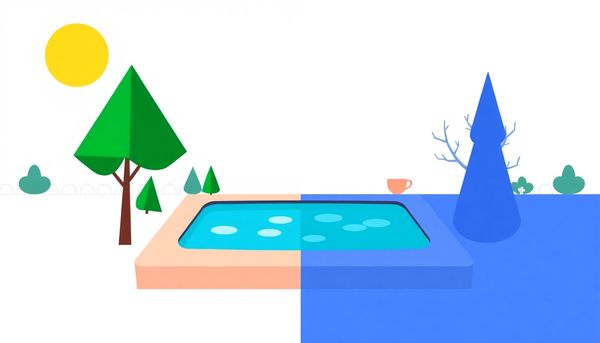
The joy of swimming isn't something to be contained within the confines of a summer schedule. With the right technology, you can extend those blissful moments from early spring to late autumn—even in winter's chill. Enter the pool heat pump, a marvel of modern engineering that doesn't just generate heat but masterfully transfers it. Unlike traditional gas heaters that consume vast amounts of energy to create warmth, heat pumps harness the sun’s energy indirectly. They pull ambient warmth from the surrounding air, transfer it to the water, and voilà—your pool becomes an all-season oasis.
Imagine hosting a crisp October gathering, where guests are astonished by the inviting warmth of your outdoor pool. It's not magic; rather, it's the sophisticated science of heat transfer at work. The efficiency of a pool heat pump is impressive. It utilizes minimal energy beyond mere electricity to power its mechanism, making it a friend to both the planet and your wallet. In humid climates, its effectiveness only grows, drawing more heat from the moisture-laden air to keep your pool cozy.
Maintenance is straightforward, too. Regular checks on air flow and water circulation ensure your heat pump runs smoothly. Should you encounter issues, often a simple adjustment or cleaning does the trick. By investing in a pool heat pump, you're not only enhancing the pool experience but also maximizing the enjoyment of your backyard sanctuary year-round.
Who says pool season has to end with the first autumn leaf or the last spring frost? With a pool heat pump, you can stretch those swimming days well beyond the traditional timeframe, allowing for a warm dip even when the weather's playing it cool. This ingenious device doesn't create heat like a conventional heater; instead, it borrows warmth from the surrounding air and channels it into your pool, making it a cost-effective and eco-friendly ally for your aquatic adventures.
Imagine waking up to a crisp fall morning and starting the day with a swim. Thanks to the heat pump’s efficient mechanics, even chilly air can be transformed into a toasty pool environment. For those living in milder climates, these pumps can keep the water inviting year-round, as long as the air temperature stays above 50°F. This way, you’re not just limited to summer; your pool becomes a daily escape, no matter the month.
Having a pool heat pump means more spontaneous pool parties, early morning laps, and serene evening swims. It’s not just about prolonging the season—it's about enriching the entire pool experience. So, why let cooler weather dictate your swim schedule? Embrace the versatility a pool heat pump offers, and redefine what pool season really means.
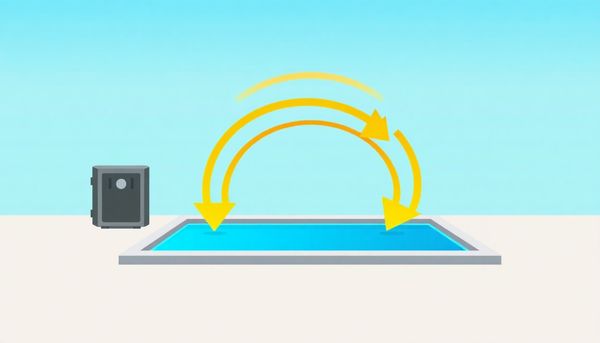
Unexpected hurdles with your pool heat pump can turn a relaxing swim into a head-scratching puzzle. When warmth seems to have vanished from your pool, start by checking the basics. First, ensure the heat pump is receiving power. A tripped breaker or faulty wiring can be the hidden thief. If the issue involves electricity, especially near water, always opt for professional help if you’re unsure.
Next, examine the water flow. A sluggish or blocked flow can thwart your heat pump’s efforts. Verify that all valves are open, and the filter is free from debris. A simple cleaning could restore the warmth you seek. If air isn’t circulating through the evaporator coil, the heat transfer process can falter. Clear away leaves and dirt to allow the unit to breathe properly.
Temperature settings play a crucial role, too. Ensure the thermostat is set above the current water temperature. A mismatched setting can trick you into thinking there's a bigger issue. Occasionally, a faulty thermostat might need replacement to get things back on track.
Finally, observe outdoor conditions. If frost is forming on your heat pump, you may be facing a temperature-induced shutdown. Heat pumps struggle in the chill, especially below 50°F (10°C). In such cases, patience is key—wait for a warmer day to resume operations.
If these quick fixes don’t bring results, or the problem feels beyond your expertise, it’s wise to consult a professional. Better to have it resolved correctly than risk further complications. With a little detective work and timely intervention, you can keep your pool invitingly warm.
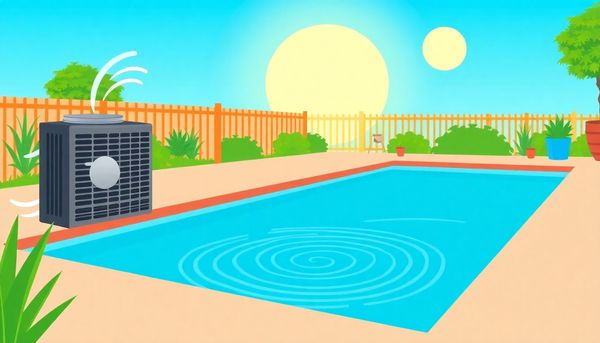
This article provided insights into maintaining your pool. Start your pool care journey today!
Want to become a pool maintenance expert? Our free Pool School course covers everything you need to know about pool care. From basic maintenance to advanced troubleshooting, you'll learn how to:
Join over 10,000 pool owners who have already transformed their pool care routine. Get started with our free Pool School course today!